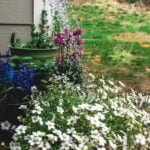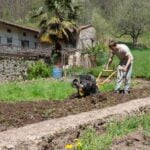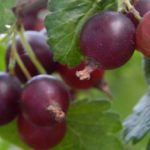When it comes to growing a thriving vegetable garden, one of the most crucial factors to consider is how to water vegetable gardens. Proper watering techniques are essential for the health and productivity of your plants. Understanding the watering needs of different vegetable plants is key to ensuring they receive the right amount of moisture to thrive.
Determining the right time of day to water vegetable gardens is just as important as knowing how much water your plants need. Factors such as temperature, sunlight, and soil type will all play a role in determining the best time to water your vegetable garden. Additionally, using the best watering techniques, such as drip irrigation, soaker hoses, or hand watering, can make a significant difference in ensuring that your plants receive moisture efficiently.
In this article, we will explore the various aspects of watering vegetable gardens, including frequency, mulching for water retention and weed control, different growth stages of vegetables, signs of overwatering and underwatering in plants, and even drought-tolerant vegetables and water-saving tips for gardening. By understanding these principles, you can ensure that your vegetable garden has exactly what it needs to flourish.
Determining the Right Time of Day to Water Vegetable Gardens
When it comes to watering your vegetable garden, the timing is crucial for the health and productivity of your plants. Here are some tips for determining the right time of day to water your vegetable gardens:
1. Early morning: Watering in the early morning is generally recommended as it allows the plants to absorb the moisture before the heat of the day. This also helps in preventing diseases by allowing the foliage to dry off during the day.
2. Late afternoon: Another suitable time to water your vegetable garden is late afternoon or early evening. This allows the plants to have sufficient moisture overnight when there is less evaporation due to lower temperatures.
3. Avoid midday watering: It’s best to avoid watering your vegetable garden during the hottest part of the day, typically between 10 a.m. and 4 p.m. as this can lead to rapid evaporation and potential damage to the plants due to heat stress.
By taking into consideration these simple guidelines, you can ensure that your vegetable garden receives the right amount of moisture at opportune times, promoting healthy growth and maximizing productivity in your garden.
The Best Watering Techniques for Vegetable Gardens (Eg Drip Irrigation, Soaker Hoses, Hand Watering)
When it comes to watering your vegetable garden, there are several different techniques you can use to ensure that your plants are receiving the right amount of water. Each method has its own advantages and considerations, so it’s important to choose the best watering technique for your specific garden.
Drip Irrigation
Drip irrigation is a popular choice for many vegetable gardeners because it delivers small, steady amounts of water directly to the plants’ root zones. This method reduces water waste by minimizing evaporation and runoff, and can also help prevent diseases by keeping the foliage dry. Drip irrigation systems can be set on timers for automatic watering, making them a convenient option for busy gardeners.
Soaker Hoses
Soaker hoses are another effective way to water vegetable gardens, as they release water slowly along the length of the hose. They can be laid on the soil surface or buried just beneath the soil, delivering water directly to the roots while keeping leaves dry. Soaker hoses are easily customizable to fit different garden layouts, and can also be attached to a timer for automated watering.
Hand Watering
For smaller vegetable gardens or when you want more control over where the water goes, hand watering with a hose or watering can is a simple and inexpensive option. This method allows you to visually check each plant for signs of moisture stress or other issues while providing supplemental water as needed. However, hand watering may be more time-consuming than using a drip system or soaker hose.
Selecting the best watering technique for your vegetable garden will depend on factors such as garden size, layout, available time and resources, as well as personal preferences. Whichever method you choose, ensuring that your plants receive consistent and adequate moisture is key to their overall health and success.
Watering Frequency
The frequency of watering your vegetable garden is crucial to the health and productivity of your plants. Different vegetables have varying water needs based on their type, size, growth stage, soil type, and weather conditions. It is essential to understand the watering requirements of your specific vegetable plants to ensure they receive the right amount of moisture.
Determining Watering Frequency
To determine how often you should water your vegetable garden, consider factors such as the type of soil, weather patterns, and the specific needs of each plant. Sandy soils drain faster and may require more frequent watering, while clay soils retain water longer, allowing for less frequent watering. During hot and dry weather conditions, your vegetable garden will likely need more frequent watering compared to cooler, wetter periods.
Monitoring Soil Moisture
One effective way to determine when to water your vegetable garden is by monitoring the moisture level in the soil. Stick a finger into the soil near the base of your plants to check for moisture. If it feels dry at a depth of 1-2 inches, it’s time to water. You can also use a moisture meter to accurately measure the level of moisture in the soil.
Watering Techniques
In addition to considering watering frequency, using efficient watering techniques such as drip irrigation or soaker hoses can help ensure that your vegetable plants receive consistent and adequate moisture without wastage. These methods can also help prevent overwatering and reduce water evaporation from the soil surface.
By understanding and implementing proper watering techniques and frequency based on these considerations, you can help maintain a healthy and productive vegetable garden throughout the growing season.
Mulching for Water Retention and Weed Control
Mulching plays a crucial role in conserving water and preventing the growth of weeds in vegetable gardens. By covering the soil with organic or inorganic materials, gardeners can significantly reduce water loss through evaporation, allowing plants to access the moisture they need for healthy growth.
Organic mulches such as straw, shredded leaves, and compost not only retain moisture but also enrich the soil as they break down over time. On the other hand, inorganic mulches like plastic sheeting or landscape fabric provide a barrier that prevents water from evaporating while keeping weeds at bay.
When applying mulch to a vegetable garden, it is important to lay it down properly to ensure maximum effectiveness. Spread a 2-4 inch layer of mulch evenly across the soil surface, making sure to leave a small gap around plant stems to prevent rotting. In addition, regularly check the condition of the mulch and replenish it if necessary, especially after heavy rain or strong winds that may dislodge or degrade the covering.
Proper mulching not only helps retain soil moisture but also reduces weed competition for water. By inhibiting weed growth and preventing excessive evaporation, gardeners can save time and effort in watering their vegetable gardens while promoting healthier plant growth.
| Mulch Type | Benefits |
|---|---|
| Organic (e.g. straw, shredded leaves) | Retain moisture; enrich soil as they decompose |
| Inorganic (e.g. plastic sheeting) | Prevent evaporation; inhibit weed growth |
Watering During Different Growth Stages of the Vegetables
When it comes to watering your vegetable garden, it’s important to adjust your watering schedule based on the growth stage of your plants. During the germination and seedling stage, it’s crucial to keep the soil consistently moist but not waterlogged. This is essential for the seeds to successfully germinate and for young seedlings to develop strong root systems. Hand watering or a gentle mist setting on a hose nozzle can be effective during this stage.
As the vegetable plants transition into the vegetative growth stage, they will require more water as they develop foliage and stems. At this point, deep and thorough watering is essential to ensure that the roots receive proper hydration and nutrients. Drip irrigation or soaker hoses are ideal during this stage as they deliver water directly to the soil around the plants without wetting the foliage, which can reduce the risk of disease.
Once the vegetables enter the flowering and fruiting stage, it’s important to maintain consistent moisture levels in the soil to support healthy fruit development. Inconsistent watering during this stage can result in problems such as blossom end rot in tomatoes or cracked peppers. Mulching can help with water retention while also providing insulation for plant roots during extreme temperatures.
| Growth Stage | Recommended Watering Technique |
|---|---|
| Germination & Seedling | Hand Watering or gentle mist setting on a hose nozzle |
| Vegetative Growth | Drip Irrigation or Soaker Hoses |
| Flowering & Fruiting | Mulching for water retention and consistent moisture levels |
Signs of Overwatering and Underwatering in Vegetable Plants
Overwatering and underwatering are common issues that can negatively impact the health and growth of vegetable plants in the garden. It’s important for gardeners to be able to identify the signs of these problems in order to adjust their watering practices accordingly.
One of the most common signs of overwatering in vegetable plants is wilting or yellowing leaves. This occurs because the roots are suffocating from lack of oxygen due to excessive water in the soil. In severe cases, overwatered plants may develop root rot, which can ultimately lead to plant death. On the other hand, underwatered plants will also show signs of wilting and yellowing leaves, but in this case, the soil will be dry rather than overly wet.
Another indicator of overwatering is the presence of mold or fungus on the soil surface or on the plant itself. Additionally, a strong, unpleasant odor emanating from the soil may also indicate that it is being watered too much. Underwatered plants, on the other hand, may have stunted growth and appear shriveled or dry.
To prevent overwatering and underwatering, it’s essential for gardeners to monitor moisture levels in the soil regularly and adjust their watering frequency as needed based on weather conditions and plant requirements. Additionally, using mulch around vegetable plants can help retain soil moisture and minimize fluctuations in soil moisture levels. By being attentive to these signs and implementing proper watering techniques, gardeners can ensure healthy growth and productivity in their vegetable gardens.
Drought-Tolerant Vegetables and Water-Saving Tips for Vegetable Gardening
In conclusion, watering your vegetable garden is essential for the success of your crops. By understanding the watering needs of different vegetable plants and utilizing the right techniques, you can ensure a healthy and thriving garden. Determining the right time of day to water, using the best watering techniques such as drip irrigation or soaker hoses, and mulching for water retention and weed control are all important factors to consider.
Additionally, knowing the watering frequency for your specific vegetables and understanding how to water during different growth stages are crucial for maintaining a balanced moisture level in the soil. It’s also important to keep an eye out for signs of overwatering and underwatering in your vegetable plants, as this can directly impact their health and productivity.
For those looking to conserve water, there are drought-tolerant vegetables available that require less water, along with water-saving tips such as using rain barrels, capturing gray water, and choosing efficient irrigation systems. By implementing these practices, you can not only save water but also promote sustainable gardening practices that benefit both your garden and the environment.
Whether you’re a novice gardener or an experienced one, these tips will help you maintain a successful and flourishing vegetable garden while being mindful of water conservation.
Frequently Asked Questions
What Is the Best Way to Water a Vegetable Garden?
The best way to water a vegetable garden is to water deeply and infrequently. This means giving the plants a good soak, allowing the water to penetrate deep into the soil, rather than just sprinkling the surface. This encourages the roots to grow deeper, making the plants more resilient.
How Long Should I Run My Sprinklers on My Vegetable Garden?
The duration of time you should run your sprinklers on your vegetable garden depends on various factors such as weather, soil type, and plant needs. Generally, it’s recommended to provide at least 1-2 inches of water per week, either through rainfall or irrigation.
It’s important to monitor the soil moisture to determine if you need to adjust the watering duration.
Should I Water My Vegetable Garden Every Day When It’s Hot?
When it’s hot, it may be necessary to water your vegetable garden more frequently than during cooler periods. However, this doesn’t necessarily mean watering every day.
It’s important to pay attention to the signs of drying out in the plants and soil before deciding on a watering schedule. In hot weather, it may be beneficial to water in the early morning or late evening to reduce evaporation and ensure that the plants can absorb the moisture effectively.

If you’re looking to get into vegetable gardening, or are just looking for some tips on how to make your current garden better, then you’ve come to the right place! My name is Ethel and I have been gardening for years. In this blog, I’m going to share with you some of my best tips on how to create a successful vegetable garden.





